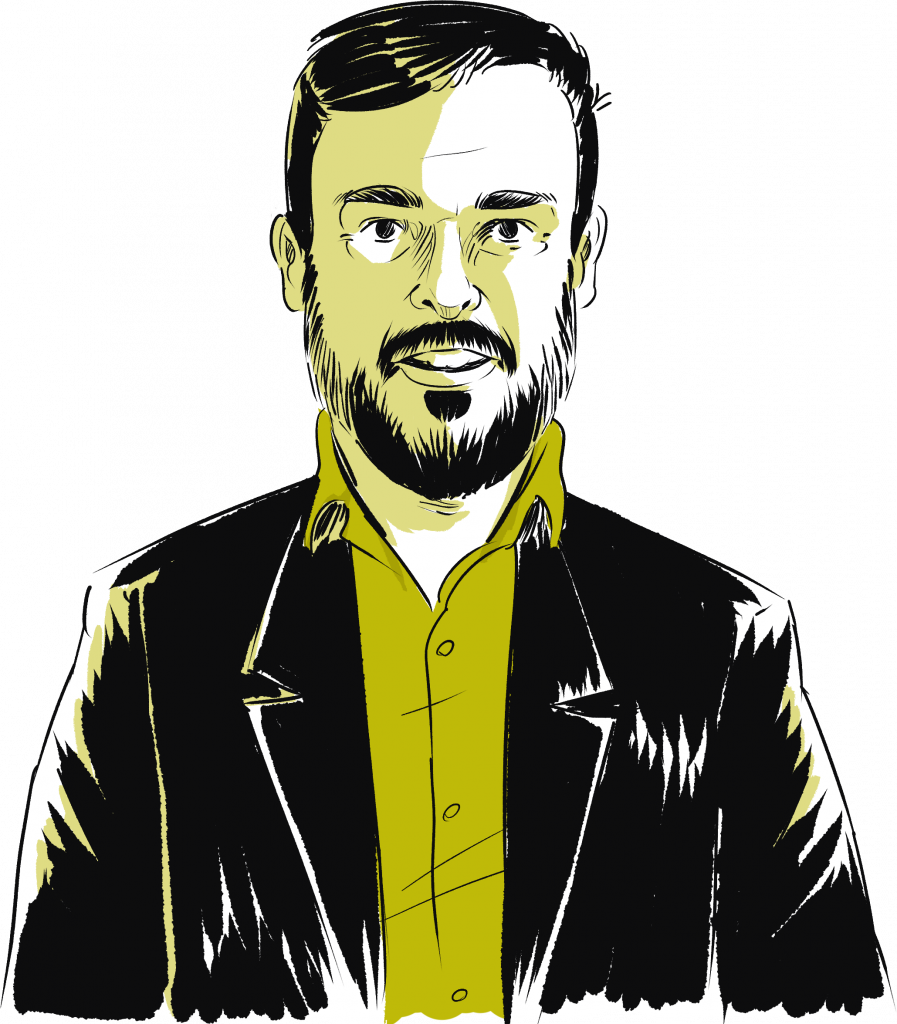Simulation centers are increasingly being recognized as pivotal in health profession education, and beyond. Our panelists discuss what has a positive (and negative) impact on design to build a successful simulation center.
The debate
Worldwide, the number of healthcare simulation and training centers has rapidly increased. A simulation facility is unique in that it mimics the working healthcare environment, yet it is essentially a learning space. The space engages the learner into an immersive experience, balancing efficiency and efficacy while adhering to architectural educational concepts/theory.
In light of the rapid evolution of simulation and other paradigm shifts such as interprofessional education and practice, it is important to renovate or build simulation centers in a way that reflects the current and future training needs of different institutions. In addition, simulation centers and labs are expected to be highly technological. Designing and building a simulation center to meet the training needs of an institution, therefore, requires so much responsibility and can also be somewhat intimidating. We asked our experts to answer some key questions to avoid making mistakes that can then directly impact the planning and implementation of simulation-based training activities.
Moderator: PierLuigi Ingrassia
Centro di Simulazione (CeSi), Centro Professionale Sociosanitario Lugano

Henrique Mendes
MSc in Biomedical Engineering and dedicated to medical education and simulation, I’m the Business Unit Director of SEEMSREAL and More Than Simulators.I’ve been helping institutions in Spain and Portugal to create simulation centres [that work] for more than 15 years now. My mission is to provide a standardized approach that allows institutions to effectively evaluate their needs and to establish a roadmap for the development of their project, always with the focus on the latest available technology, functionality, and productivity.
June Hanley
Vice president and principal planner with HDR,specializing in laboratory and academic planning with a focus on health sciences and simulation.
Phillip Wortham
Phillip Wortham, MBA, BA, CHSOS-A, a distinguished healthcare leader with 12+ years in simulation, blends technical prowess, conceptual acumen, and operational expertise. From Denver Health to CAMLS, he drove innovation. Now Chief Clinical Simulation Officer at PRAXIS,focusing on rural healthcare training. Also, a volunteer Accreditation Site Reviewer.

Q1 The topic is too serious to say, thus let’s get straight to the point. Which is the most important key design factor for a successful simulation and training center?
Henrique Mendes: Well, it’s very hard to point to a single key design factor that renders a project successful (or not). Most projects have very specific needs, and those needs are usually dependent on the type of simulation center (Hospital or University based, etc.), educational goals, stage of the Center (among many other reasons). Nevertheless, there is a moment that has a great impact on the success of a project. Most times when you decide if you are going to outsource the knowledge to guide you along the project, or if you will take those responsibilities, is critical. I usually put it in an analog example for context: it is the same situation as when you identify the need in your life to be able to travel at your own will. The decision is: do you buy a car, or should you build my one car?
Phillip Wortham: The most important key in design for a new simulation center may depend on what your role is within healthcare simulation and the type of education your program provides whether it is academic based, has a focus on military or hospital facing. For example, if you were to ask any simulationist what they need more of in a design, 99% of them would say storage space or more space in general. The key factor here is to have a representative for each discipline in the design phase. This ensures operational efficiency once the building is complete. It is important to come together as a team of educational and operational experts to design the simulation center or lab to meet the learning objectives and operational goals of the program, while remaining within the confines of best practices in simulation and functionality, all while retaining a psychologically safe space for healthcare professionals to learn in.
June Hanley: Understanding the flow of people, equipment and materials is a key factor for designing a successful simulation center. What size groups are being trained? Where are standardized (actor) patients (SP’s) staging themselves? If Objective Structured Clinical Exams are being conducted there, are students to be separated from the SPs – sometimes but not always required? Storage facilities for rotating equipment are crucial and so is understanding how that equipment is moving back and forth. Prebrief and debrief facilities need to be as close to the active SIM rooms as possible. Control rooms for SIM operators and monitoring/observation rooms must be integrated with appropriate access. The number and type of staff required to run the facility efficiently must be determined, and seating space for them must be located appropriately. All these factors contribute to the flow, and thus to a successful facility design.
Q2 Based on your previous center and lab renovation and construction projects, which are the most important oversights to avoid?
PW: I have had the opportunity to design several simulation centers around the United States. Everyone unique. Whether you are renovating a space for a simulation center or building a new one, it is important to pay attention to the details. Some of the most common oversights that exist are ones that cost a lot to fix if not done in the design phase. For example: the width of doorways is usually something that is not missed too often however, the width of a corridor or hallway is. The hallway should be wide enough to maneuver large beds and other clinical equipment in and out of rooms. The key to avoiding such oversight is to work with your local hospital, or clinic to gain an understanding of current measurement of rooms and corridors in their facility. Ask the question. Is there a plan to change sizes of space in the future and build towards those standards?

JH: It is imperative to understand who will be trained in this center. The needs of beginning nursing students are very different from those of practicing surgeons. The most versatile simulation centers can serve the needs of many disciplines, and those in forward-thinking institutions embrace interprofessional education and training, choosing the most versatile use of an expensive facility. I find it a missed opportunity to dedicate a SIM center to one type of student since both students and practitioners of health care are very busy people and will not be in this center all the time. It is an expensive space, and you don’t want it to sit idle while the students are elsewhere. When budgets are fixed, usually choices have to be made, and the best way to make those choices – what spaces, what equipment, level of technology, etc. – is to evaluate the types of trainees and layer in their needs in the most creative ways.
HM: Technically the audio is one of the most critical aspects that is usually misjudged. Based on the simulation methodology, the video is very important for the debriefing process, but most people forget that the video by itself is useless if you cannot understand clearly what it’s being communicated. Most of the video usefulness relies on the audio, and a great number of centers have audio problems that start in the planning phase of the simulation center. There are a couple of signs that we internally use to identify the quality of the work when someone designed a simulation center. Audio cables taped to the floor, walls or ceilings, many mics in one small room and audio mixing tables on control rooms are red flags that let us know (in 15 seconds) that something is not working as it should in the sim center.
Q3 Most sim centers and labs are heavily technology-focused. As technology advances, should the center design take in consideration the capacity to adapt and integrate these emergent technologies? And how?
JH: Technology is undoubtedly a critical part of any sim center design, and as we know, technology reinvents itself every 18 months. Healthcare by its nature is also changing rapidly, as biomedical science and engineering are coming together in exciting new ways. So as healthcare techniques and practices change, the simulators and practices will change with them, and the training tools must keep up. The multiple cameras and viewpoints required within the simulation spaces, the technology required for the very sophisticated manikins and other equipment, and the recording technology that allows for the playback of teachable moments in debrief sessions will all change over time. We try to layer in robust pathways within the facility and delay the actual purchase of those elements until fairly late in design. It’s also critical to have an equipment integrator on the design team who has the skill to coordinate all the different types of equipment and technology and ensure they can all talk to each other.
HM: A simulation center is a project with a lifecycle, and this lifecycle is tied to the technology you choose for it. Every simulation center sooner or later will become obsolete. The goal here is to plan accordingly. My first recommendation is to evaluate carefully or consult with an entity that deeply understands the technology to avoid buying “end of life” technology from the start. As a second recommendation (disclaimer: it’s always a good idea to leave some space for small improvements and corrections) the focus should be on building a functional Sim Center – a simulation center that works – with the current gold standard technology. It is inevitable to become obsolete, so the strategy should be based on an iterative improvement model. You build the best for today, and in 5 years you restart the life cycle, evaluate what worked and what didn’t, redefine your needs, establish a new plan and improve on the technology.

PW: We all love advancements in technology. Especially advancements in simulation-focused modalities. The design of your simulation center should take into consideration the ability to adapt and integrate these new technologies without negative impact on the program whether it is financially or operationally. It is vital to the success of your program to future proof your simulation center. This can be done by integrating a few practical concepts into the design.
- Install larger than normal conduits to run more cable in the walls or take old cable out
- Any cable run should have 10 ft or 3 m of additional cable looped to have the ability to move technology around.
- There are never too many power outlets.
- Ensure there is a way to open the patient headwall to access equipment and add additions.
- Leave additional ports open in your networking rack.
- Hire a Technology Specialist before the final design of the space is complete
Q4 Should sustainability elements be integrated into center space design?
HM: Yes, of course that sustainability elements should be considered when planning a sim center. There are many reasons to integrate sustainable elements into a sim center, and I can give you some examples. The environmental impact of the project (during the construction phase and throughout its life), the energy efficiency of the structure and its adaptation to the specific and local conditions, the cost savings related to materials and expenses, or the enhanced user experience incorporating natural light and green spaces, all have a huge impact on the long-term results of the center, and in the reputation of the stakeholders of the project. Choosing sustainable elements for your project aligns with the broader goals of environmental protection, resource conservation, and better outcomes for users and staff. It is a responsible approach that benefits not only the institution but also the community and the planet.
JH: There are many aspects of sustainability and wellness that go hand-in-hand. We should design every project with strategies for energy and water efficiency because we are (or should be) responsible citizens of the planet. Beyond that, any educational facility should promote the health and wellness of those working and learning there. Natural light where appropriate, good indoor air quality, thermal comfort and good quality light and acoustics are sustainable features that are not expensive features to incorporate but make all the difference to the comfort of those using the facility. The bottom line is that you are creating an expensive facility, so you want people to want to be there.
PW: Integrating sustainability elements into simulation center space design is a prudent and responsible approach that brings together economic, environmental, and social considerations. The tangible benefits, ranging from cost savings to potential tax incentives, align with broader efforts to create a more sustainable and resilient future. As we continue to address global challenges, embracing sustainable design practices is an essential step towards building a more harmonious relationship between human activities and the environment.
Q5 I am a lover of beauty. In your opinion, how important are the aesthetics in the appreciation of center and lab space?
JH: Wow. What a great question. My role as a planner is on the very front end of design, developing the program of requirements, size and configuration of spaces, etc. and then working with the designer to make sure the space functions. However, I have learned a lot from my designer friends, and aesthetics are crucial to the way that people will appreciate the environment and will want to work, study and learn there. Some of the wellness features I mentioned above go hand-in-hand with the aesthetics of the spaces. Comfortable finishes, biophilia, warm atmosphere, and good design contribute to healing in a healthcare environment, and healthcare designers understand that. Since a simulation center’s function is to provide both a healthcare and educational environment, those goals are important here as well. And while good design choices certainly can add cost to the project, they don’t have to. Designers are researching materials, finishes and lighting all the time, and creating a dynamic, engaging and sustainable environment for students does not require expensive choices.
PW: The visual appeal of a new center significantly influences its acceptance and adoption. Striking the right balance between aesthetics and practicality is crucial, especially within the confines of a clinical environment. Over the course of my career, I have encountered numerous simulation centers, each encompassing a broad spectrum, from modest single-patient rooms tucked in hospital basements to expansive standalone simulation facilities nestled in bustling urban centers. In this context, it becomes imperative to align the design with the prevailing clinical landscape of your region. Introducing aesthetic elements is permissible and can foster a warm and inviting ambiance for the center’s faculty, staff, students, and visitors. To achieve this, I make it a point to stay attuned to the prevailing cultural and general norms, ensuring that the design resonates seamlessly with the expectations and practices of the specific geographical area. While functionality remains a paramount consideration, the integration of aesthetics holds its own significance. By mirroring the visual attributes of clinical spaces within your locality, you can create a functional and visually engaging environment, thereby enhancing the overall experience for all those who engage with the center.
HM: In my team we’ve developed a model that evaluates six different factors as a reason to build a simulation center. This is one of the first questions we ask to an institution that approaches us with the intent to build a new simulation center. One of these six factors relate directly with the aesthetics. “Aesthetics by aesthetics” should always be a second line requirement when compared with functionality. But we understand the importance of aesthetics as a marketing, engagement, and wellbeing factor. In that sense (for example, for a university that must recruit students) aesthetics might be a first line requirement. Also, if the costs and times of a project are not affected, choosing well-designed and cared for spaces will always be an easy decision towards aesthetics.
Conclusion
Designing and building a Simulation Center is not a small feat. There are many layers to the planning, and eliciting them all early in the process is crucial. Balancing efficiency, efficacy and aesthetics is paramount while adhering to educational concepts and theory. Sustainability elements should also be considered and can impact directly the users. Technology is undoubtedly a critical part in the design process: it should take into consideration the ability to adapt and integrate new technologies without negative impact on the program whether it is financially or operationally. Thus, assuming the responsibility to design or renovate a simulation center should not be taken lightly as it can have serious implications, both for the success of the project as for the stakeholders and decision makers involved. The collaboration with professional design teams is essential in providing expert guidance and involving the faculty staff in the design process is key.
READ ALSO






























1 comment on “Which elements to consider in simulation center design?”
Great article!